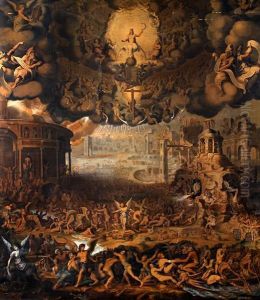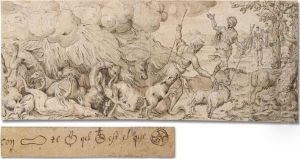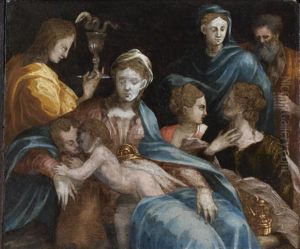Jean I Cousin Paintings
Jean I Cousin, also known as Jean Cousin the Elder, was a French painter, sculptor, etcher, engraver, and geometrician. He is considered a notable figure in French art history but remains somewhat elusive, with many details of his life and work still shrouded in mystery. Cousin was born around the year 1500, though the exact date and place of his birth are not precisely documented. It is believed that he was born in Soucy or Sens, in the Burgundy region of France.
Cousin's active period in the arts spans the mid-16th century, a time when the Renaissance style was being introduced to France. He is often cited as one of the first French artists to be influenced by the Italian Renaissance, and he played a significant role in its dissemination in France. Despite this, much of his life's work was carried out in the Gothic tradition, which was still prevalent in French art at that time.
One of Cousin's most famous works is the painting 'Eva Prima Pandora' (Eve the First Pandora), which dates to around 1540. The painting is notable for its complex iconography and has been interpreted in various ways, often as an allegory of the ideal beauty and as a synthesis of medieval and Renaissance styles. It is considered one of the masterpieces of 16th-century French art and is held in the Louvre Museum in Paris.
In addition to painting, Cousin was also known for his work in stained glass. He produced numerous designs for stained glass windows, many of which can be found in churches throughout France. His geometric treatise, 'Livre de Perspective' (Book of Perspective), published in 1560, is another testament to his versatile talent and his interest in the theoretical aspects of art. This work underscores his understanding of mathematical principles and their application to art, particularly in the context of creating the illusion of depth and space.
Cousin's death is as uncertain as his birth, with estimates suggesting he died around 1590. His legacy continued through his descendants, notably his son, Jean II Cousin, who was also an artist of some repute. Despite the lack of extensive documentation, Jean I Cousin's contribution to the arts is recognized for its blend of Gothic and Renaissance elements and his role in the early stages of the French Renaissance.


